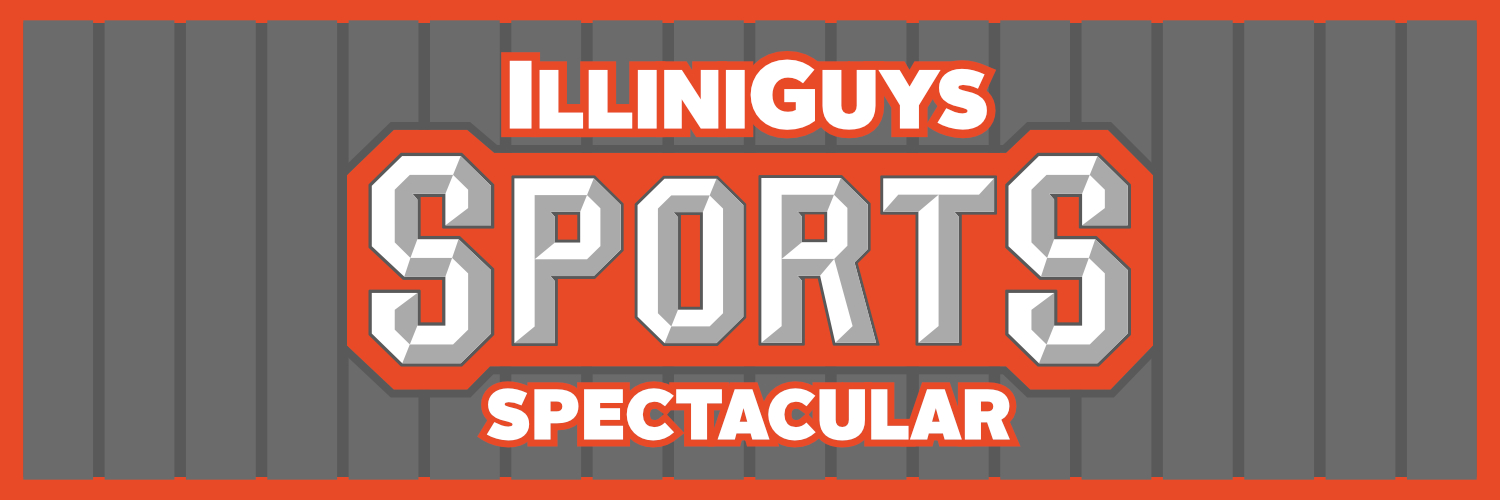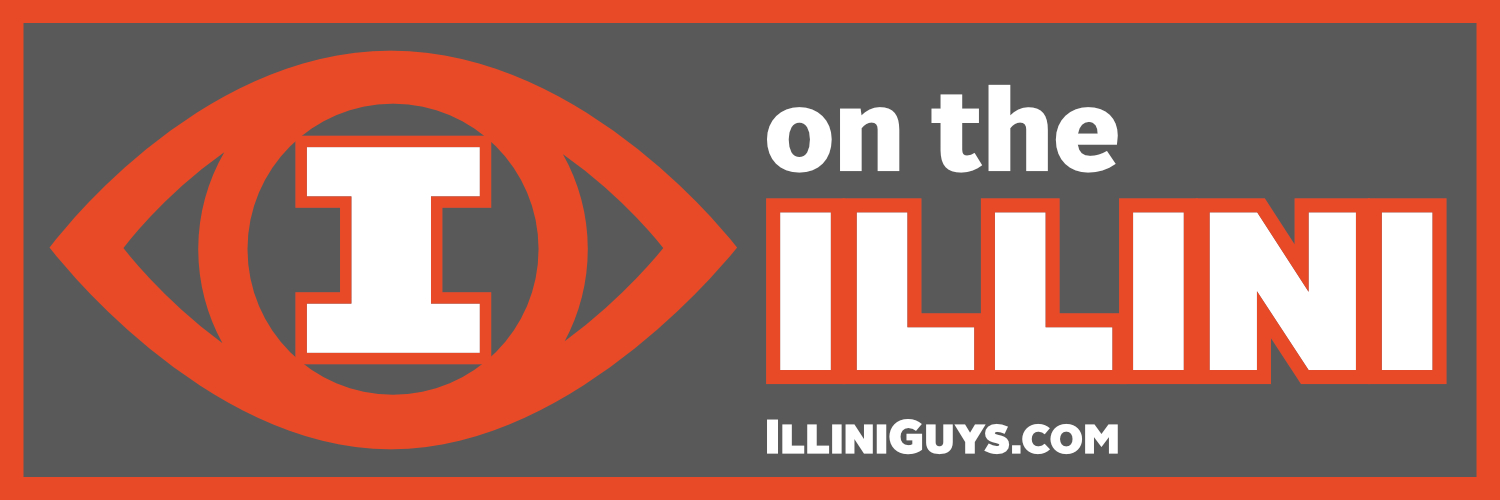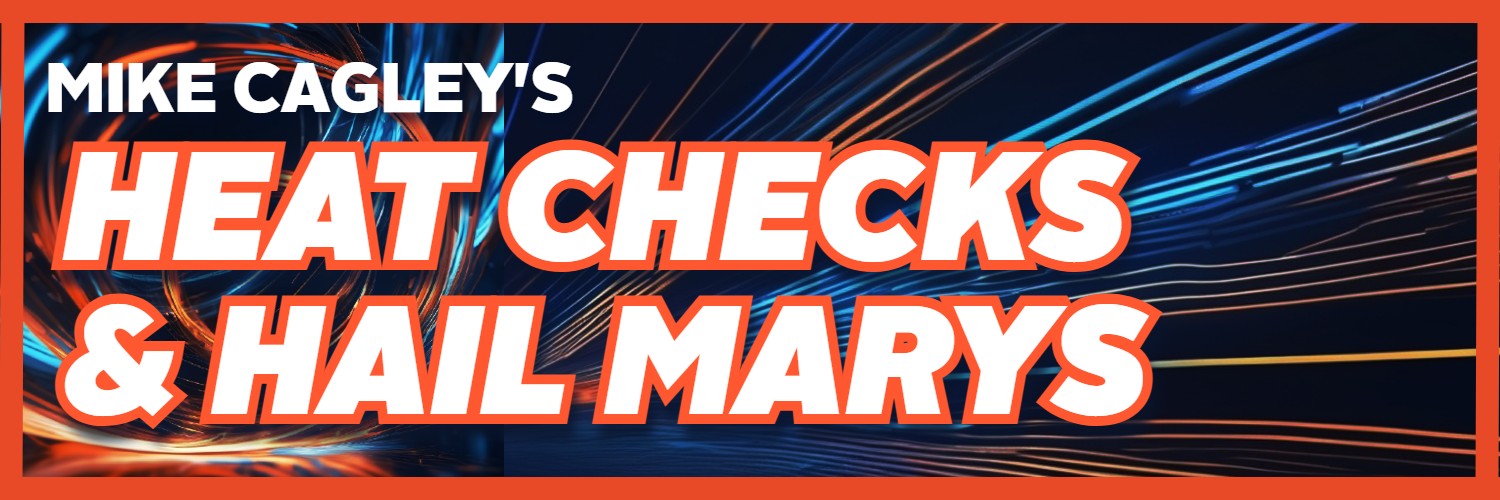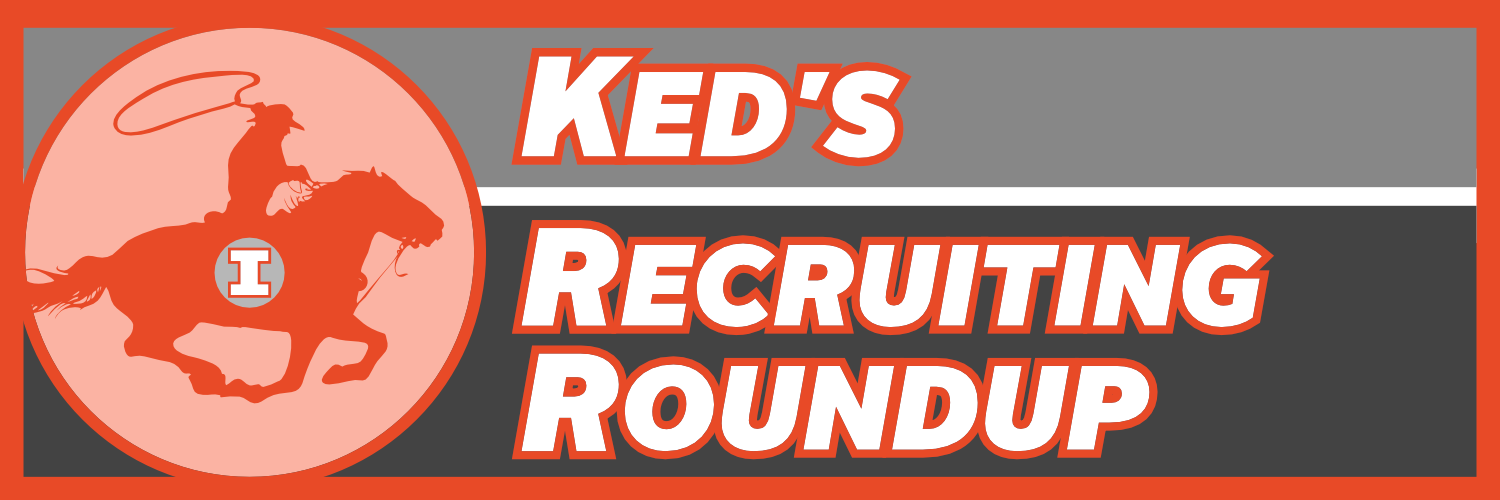Mike Cagley, Co-Host of Big Sports Radio and IlliniGuys Sports Spectacular
March 7, 2024
The future of collegiate sports is in flux. Almost no facet of the collegiate sports world will go untouched by the changes being thrust upon the industry by NCAA litigation losses, the introduction and evolution of NIL funding, the effects of the transfer portal and conference realignment. The thought of student-athletes potentially being treated as employees to conform to legal requirements will shake the foundations of collegiate amateurism.
Predictably, the response from some fans, many collegiate administrators, and most coaches is fairly negative. This isn't a surprise, especially when it comes to football coaches who hate anything they cannot control. The responses follow typical responses to change. People tend to respond in four stages:
I submit that many associated with collegiate sports are currently moving through either Stage 1 or Stage 2. I don’t have as much at stake; thus I've moved into Stage 3 and maybe even Stage 4 in some areas. I am actually bullish on the future of collegiate sports. Let's talk about why I think the future of collegiate sports is brighter than the past and am excited about the changes:
The NCAA’s treatment of student-athletes is not legal in the eyes of Supreme Court Justice Brett Kavanaugh, who wrote this in after the NCAA vs Alston case, "Nowhere else in America can businesses get away with agreeing not to pay their workers a fair market rate on the theory that their product is defined by not paying their workers a fair market rate. And under ordinary principles of antitrust law, it is not evident why college sports should be any different. The NCAA is not above the law."
For reasons unknown to most fans, the NCAA is hoping for some sort of Hail Mary from Congress to give them relief from anti-trust penalties based on their treatment of student-athletes. To expect help is an extreme long shot, this is a Congress who can’t agree on anything. When you add in it’s an election year, the NCAA needs to move on and find a way to allow student-athletes to become employees.
If the NCAA doesn’t realize this, the B1G and SEC clearly do. They appear to be ready to divorce themselves from NCAA leadership (with other conferences possibly involved) and allow players (employee-athletes formally student-athletes) to be paid. This pay would be funded by a to-be-agreed-upon percentage of the television contract and individual NIL deals run through/in concert with the schools.
Going from student-athletes to employee-athletes is a massive change, but under-the-table money, inducements, etc. have been part of the game for decades. Under new rules imposed by recent NCAA court losses, payments for play are now above board and the market will determine the going rate. Schools can design a budget suited for their ability to pay and desire to win. The money has always been there, now the money spent will be much more transparent. Ohio State experienced 5 losing seasons since 1951. This new system won't end the issue of the "haves" and the "have nots" but it may be clearer as to the reasons that some schools win more often than their conference peers. If other schools want to elevate their results, the investments needed for success will be clear.
In this new world, there’s no need to enforce recruiting rules. Players will get what the market demands, and it’s been made clear through the transfer portal movement over the last few years that players will also use playing time as a key factor to make their collegiate school selection decision. Whatever organization replaces the NCAA won’t have to worry about rule enforcement. Or the NCAA must evolve.
Let the marketplace set the rules and end the enforcement of ridiculous NCAA rules. This will make it better for fans, coaches and university personnel who wonder why their school got “nuked from orbit” by the NCAA and another school doesn’t get serious penalties for similar actions. The arbitrary and capricious nature of the NCAA will no longer exist.
The transfer portal is the wild, wild west right now. Multiple transfers are allowed because exceptions to the rules are granted often by the NCAA, and then these exceptions are used in legal proceedings to shred any semblance of a rule book. Instead of the current chaos, the transfer portal rules can be part of the work agreement and then enforced to re-establish consistency and restore some sense of sanity back into the system.
The transfer rule would be agreed upon by employee-athletes and whatever replaces the NCAA. The transfer portal could be agreed upon and implemented as it was intended, with one transfer with immediate eligibility and additional transfers requiring a year before eligibility begins.
Many argue there are too many transfers in Division I athletics. Let’s compare student athlete transfers to general student transfers. In 2022, 13% of Division I student athletes entered the Transfer Portal. When you compare that to the general student population, for the same year, undergrad transfer enrollment represented 13.2% of all continuing and returning undergraduates.
The student-athletes are now essentially transferring at the same rate as other students. If undergraduate education isn’t threatened by this transfer rate, athletics won’t be destroyed either.
Another comparison can be made. No one seems to mind if a collegiate coach is talking to his team about loyalty and teamwork on a Saturday and ends up talking about the same subject at a new school to a new team later that same week. If the collegiate coaches can move from school to school in the name of bettering their career in search of more competitive pastures to hunt for titles, why shouldn't players have the same opportunities? To some extent, the movement of coaches without even a glance in the proverbial rearview mirror is motivator for treating players in a similar way.
There is no doubt with some sort of labor agreement between employee-athletes and the NCAA (or the whatever replaces it), fans will appreciate having some degree of limitations on player movement. Players will have the advantage of understanding transfer rules and incorporating NIL rules and playing time for the purpose of making beneficial transfer decisions.
NIL organizations can work in concert with athletic departments to work together to raise money to assist in building rosters. Pay-for-play has been ruled by the courts to be legal. It’s time to tap into alumni networks, local businesses, and other sources of revenue to provide income opportunities for the players.
Decades ago, the NCAA could’ve allowed players to make a small amount of revenue from things like the sale of their jerseys and even a sliver of ticket revenue. As we all know, that didn’t happen due to the NCAA’s short-sighted leadership. Players grew tired of watching increasing compensation and freedom of movement for coaches. They went to court to get a share of the revenue and laid the groundwork for the changing that is happening today. Thanks to the NCAA losing regularly in the courts, the genie is out of the bottle now. Either a successor to the NCAA or the NCAA itself must evolve and allow pay-for-play.
Since NIL is here to stay, develop a program and process that makes sense for today's environment. The NIL process should be transparent. NIL funding should also be driven by the market. There’s no need to erect a labyrinth of rules that make it impossible for schools to execute NIL programs and the enforcement of such rules by the NCAA would be similarly difficult unless they have forensic accountants and the right for them to poke around in the finances of players, their families and their agents (not going to happen, by the way). Save time and expenses, don't attempt to do what can't be done.
The free market will work its magic here. Players want time on the playing field and donors don’t have infinite amounts of money for players who aren’t playing. This is another area that doesn’t need an enforcement arm. It’s time to let go of behaviors in the past that don’t make any sense for the future norms. Again, we see it will be better for fans, coaches and university personnel as noted above.
Already the ability to make money in NIL is causing players to stay in school longer versus entering the NFL Draft. In 2018, 106 football players declared for the draft after three years in college, in 2024, only 54 have made that choice. This means players can make more money staying in school versus being a mid-round draft pick. The quality on the field is improving as players stay longer in school. The fans win as on-the-field play improves. Playing time is a huge motivator and in concert with NIL, there may be a redistribution of talent as highly ranked players transfer away from limited playing time situations in search of more playing time and a little bit of NIL to boot.
On the surface, conference realignment looks to be creating “super conferences” that are geographically too large to maintain close geographical rivalries and reduce the number of times that conference teams play each other. That isn’t good in the eyes of most fans. In my opinion it’s a matter of perspective. Where they are right now isn't desirable in my eyes, either.
What if the conferences got even bigger? What if the B1G and the SEC made it to 24 teams each? This might happen if the ACC fragments. The B1G and SEC could “eat up” the best-of-the-best and the remaining "unclaimed" ACC schools might move into a “supercharged” Big 12. Why is this a good thing, you might be thinking?
If the B1G were to grow to 24 teams, then you could model the conference after the NFL. You could have 4 divisions each containing 6 teams (or vice versa). Even if the B1G grew to 20 teams, there would be a way to keep divisions in place that would maintain many older rivalries (see below) while creating a few new ones.
This would allow for schools to get geographic rivals back and they could play these rivals more often to reignite the rivalries that have been eroded by the earlier iterations of conference realignment beginning with the dissolution of the Southwest Conference decades ago.
For example, the Big Ten could have two divisions, each with 10 teams. These would allow many existing rivalries to continue and create new rivalries as well:
|
West |
East |
||
|
Washington |
Wisconsin |
Michigan State | Rutgers |
|
Oregon |
Illinois |
Purdue |
Maryland |
|
USC |
Northwestern |
Indiana |
Penn State |
|
UCLA |
Iowa |
Ohio State |
*Notre Dame |
|
Nebraska |
Minnesota |
Michigan |
*Florida State |
These divisions are there for illustration purposes. The competitive strengths of the divisions would need to be negotiated and teams selected for conference membership would have to be based upon B1G criteria (of which generation of additional revenue for TV contracts would be a big deal – and Notre Dame would trump all other school choices).
Fans would enjoy the new rivalries along with keeping the storied rivalries from the past. My preference is a 24-team B1G, which with planning would allow for an even more regionalized set of divisions. It wouldn’t be hard to find four more teams, but the revenue stream would be important and would probably be the true limiting factor for expansion.
College football is second to the NFL in television ratings when it comes to live sports. Live sports are the one area of broadcasting that is increasing ratings and the number of viewers. The growth of streaming services along with the need for live sports to drive ratings provides an opportunity for the B1G and SEC. The introduction of streaming services willing to invest in live sports allows the B1G and SEC to slice off pieces of their game inventory to generate additional revenue and allow fans to watch their favorite teams with ease.
Couple the expansion of ways to reach the consumer (television and streaming) with new conferences featuring new rivalries and the ratings will keep going up. More importantly, the new College Football Playoff will generate an audience that over time may rival the NFL’s playoffs and Super Bowl.
The real winners here are the fans of the schools involved in the “super conferences” – whether it is just the B1G and the SEC or if it includes a fusion of other schools under the Big 12 banner. This alignment features more big rivalries and with a little luck even some renewed local rivalries to increase the intensity of the fan experience.
The B1G and SEC or the evolved NCAA has a chance to better define the linkage between academics, sports, and the new employee relationships. The following questions can be answered for today’s employee-athletes (not forcing student-athletes into an antiquated model that doesn’t fit the modern world):
This would make the college experience more valuable to the employee-athlete and make sure those employee-athletes who stay for the full four or five years get the best education possible to use in the real world. This may mean that someone exists the system with a trade to provide income as opposed to a pure college degree.
Collegiate sports leadership has to understand that one size does not fit all. If someone were to give every American a t-shirt, if they were all the same size (let's say XXL), there would be many Americans who could not make that size work for their needs. The same is true with collegiate sports. There should be a different model for Division 1 schools and the rest of the schools participating in athletics at lower levels. There isn't the money for all athletes to receive payments as employees. There may need to be a model similar to today's model for schools and athletes than want to play under those rules.
This change disrupting the very top of the collegiate sports world provides an opportunity to look at all levels of collegiate sports and allows a review of the rules to ensure the environment works for those lower levels of collegiate competition. Maximize the good for everyone while working to revamp the rules for those schools at top. Do not settle for a single solution that hurts the levels below Division I.
In fact, all potential solutions need to be reviewed. Maybe the solution is to implement a set of rules for the B1G and SEC only. It may make sense to run football as a single sport separate from all other sports. The point is to investigate all options in pursuit of solutions designed to work differently based on the needs of the schools participating, not based on the needs of the NCAA (or whatever organization replaces the NCAA).
The other area that I would challenge the B1G and SEC conferences is to hire full time officials for football and basketball. The television contracts for each conference will bring in over a billion dollars a year. Use some of that to improve the officiating of the games. Fans will never be totally satisfied with the calls for or against their team, but there are many instances of officials in better physical condition, working a less stressful game schedule, training year around and being coached year around would result in an improved experience for fans watching the sports. Even adding a replay official to correct obvious calls in real time (not taking 10 minutes to debate with the whole crew) will make the viewing experience a better one. This doesn't even mention that the players and coaches deserve more consistency in calls during the heat of competition. And pay the best officials more money for being the best. If they do an objectively good job in front of a national television audience and in a packed stadium or arena, the officials deserve a higher level of compensation as a result. Pay them well.
There are other ways to improve the game, but solving problems like this creatively will work to improve the product for fans, players, and coaches and even the officials working the games. It's a huge win for everyone and a better experience and product is a reward that pays dividends that keeps the sports thriving and growing.
This changing of the student-athlete world which is being forced to quickly morph into the employee-athlete world is a high-stress time for all involved. It can be viewed as a court mandated disruption that is unwanted and undesired by those running the collegiate sports world. That point of view won’t do anyone any good.
This time of change should be looked at as an opportunity to recreate the employee-athlete relationship with the schools with a focus on wins for both sides of the equation, making sure that the players share in the revenue generated, and setting up a system in which schools can still run an athletic program that allows athletic and educational opportunities for the employee-athletes involved.
The future is here. The opportunities for improvement are out there. The old model and the old system have outlived their functionality. It’s time for collegiate leadership to roll up the metaphorical sleeves to ensure the new system developed is the best solution for 2024 and beyond. It's got to work for the universities (a given) and the players. Get to work collegiate power brokers. The path to improvement is there.
There is no reason to assume that with the right leadership and thoughtful changes, the future can be brighter than today. I think it will be.

Dec 13 Weekend - Hour 2 - S4Ep18
Listen
Dec 13 Weekend - Hour 1 - S4Ep18
Listen
Illinois Fighting Illini Win 86-80 versus Wisconsin Badgers - #441
Listen
College Football Playoffs, Coach Collins Quote, Play Morez Johnson More & Has Drew Allar Arrived & Sturdy Stops In to Talk Illini BB & FB with CFP
Listen
Dec 6 Weekend - Hour 2 - S4Ep17
Listen
Dec 6 Weekend - Hour 1 - S4Ep17
Listen
Illinois Fighting Illini Lose in OT at Northwestern - #440
Listen
Illinois Fighting Illini Football National Signing Day - #439
Listen
Illinois Fighting Illini Football Legend Kurt Kittner Talks Illinois & B1G Football #438
Listen
Heat Checks & Hail Marys – Ryan Day, High School Football Playoff Solutions & An AD's Response & B1G Football Team Rankings
Listen
Ked's Recruiting Roundup - Ked interviews Top JUCO Linebacker & Illini Commit Ismael Kante
Listen
Illinois Fighting Illini 38-28 Win Over the Northwestern Wildcats – Post Game Analysis #437
Listen
Illinois Fighting Illini 38-28 Win Over the Northwestern Wildcats #436
Listen
Nov 29 Weekend - Hour 2 - S4Ep16
Listen
Nov 29 Weekend - Hour 1 - S4Ep16
Listen